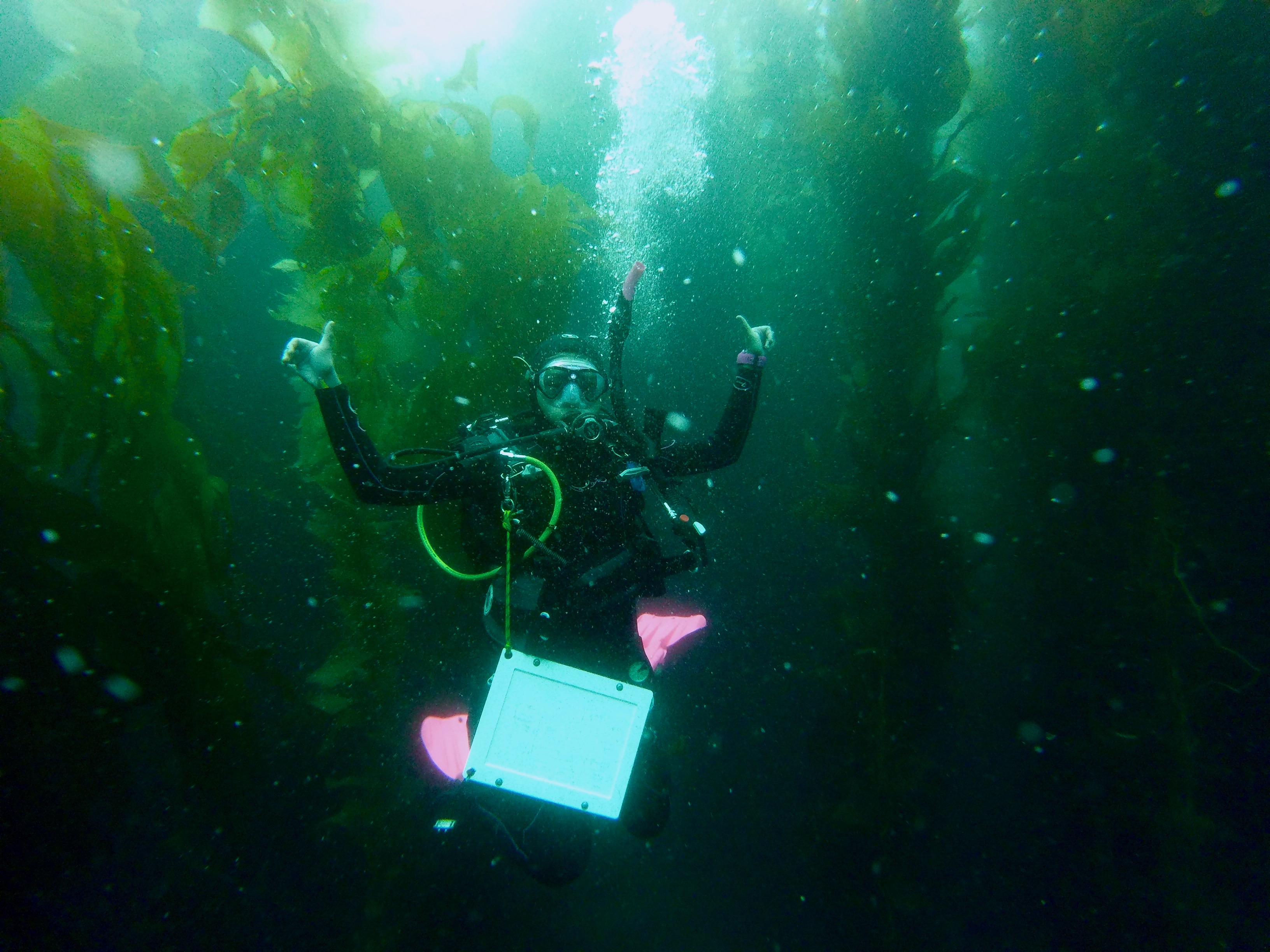By: Kent Pham
Hey there! My name is Kent and I’m checking in from the NSF-funded USC Wrigley Marine Science Center’s REU program.
Every day is filled with something fun – from dancing in town on Friday nights to trips into Avalon. Between all the fun activities, it may look hard for us to tear ourselves away and work in a lab; however, that could not be more incorrect. Everyone has exciting projects to work on and I have the pleasure of working with Dr. John Heidelberg and Elaina Graham on studying aerobic anoxygenic photoautotrophs.
Aerobic anoxygenic photoautotrophs is a bit of a mouthful so I’ll be referring to them from here on out as AANPs. AANPs are bacteria that can use light to turn carbon dioxide into sugar, survive in the presence of oxygen, but do not produce oxygen themselves. On paper it sounds simple and easy but in practice, AANPs have not been studied due to all the conditions that would have to be met to classify them as such. However, a recent study led by Elaina Graham has suggested the widespread prevalence of AANPs in marine environments. Metagenomic data from the TARA oceans project reveals that AANPs are found around the globe at an average depth of five meters.
To study this class of bacteria, water is pumped from the ocean surrounding Catalina Island. To perform sampling, I take a boat out to different areas around the island and use a pump to draw water from around five meters. Once the water is taken back to the lab, thiosulfate is added to the samples as evidence has suggested its role in the metabolic pathway of most AANPs. The samples are then incubated under infrared light to promote the growth of AANPs and suppress the propagation of chlorophyll-based bacteria. These samples are then filtered and analyzed via DNA extraction and cell counts.
Based on the amount of DNA present and the ratio of AANPs to chlorophyll-based bacteria, changes to the experimental set up can be made.
The goal is to be able to determine a method of consistently enriching AANPs to a level where they can then be easily studied. If the enrichment goes well this summer, we hope to be able to quantify the exact amount of carbon fixed by AANPs worldwide to better understand how carbon dioxide can be taken out of the atmosphere by bacteria. Though the summer may be running out, there’s still plenty of science to do, both on this project and some ones you’ll hear about from other REU students!




